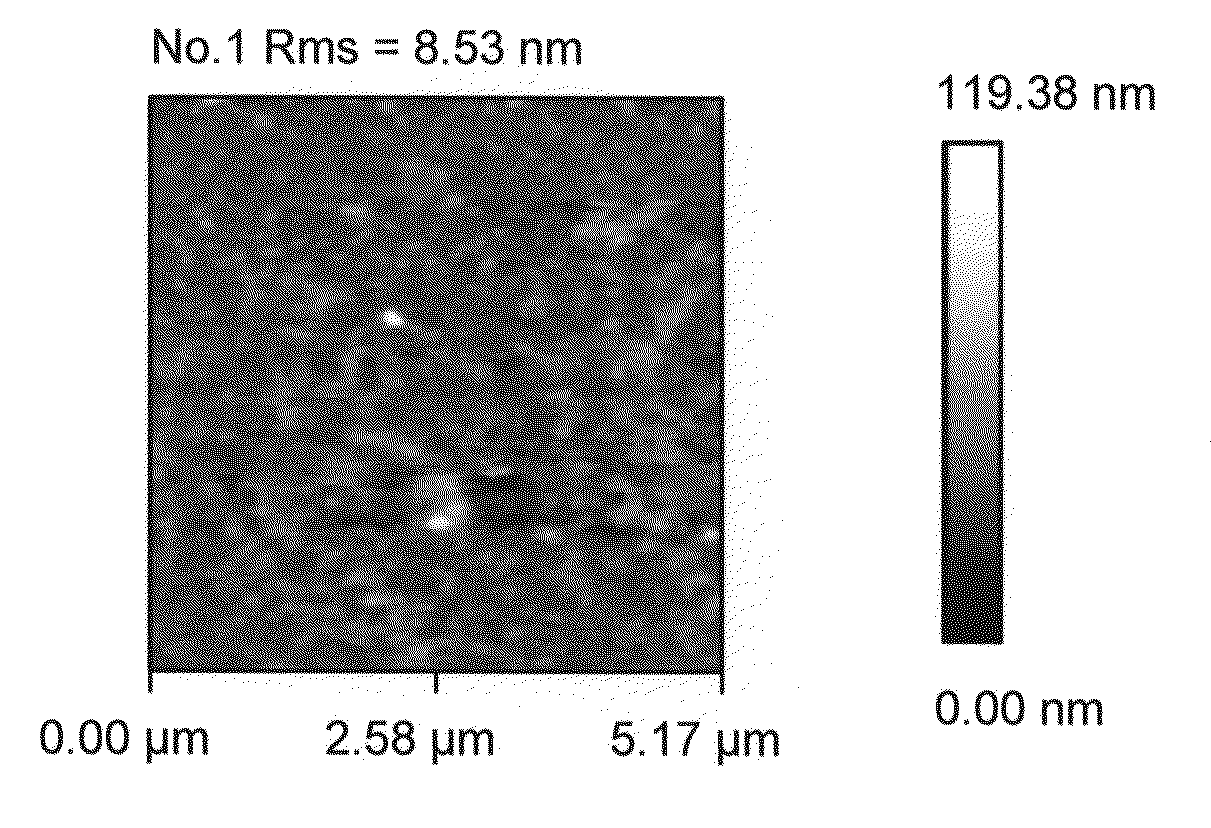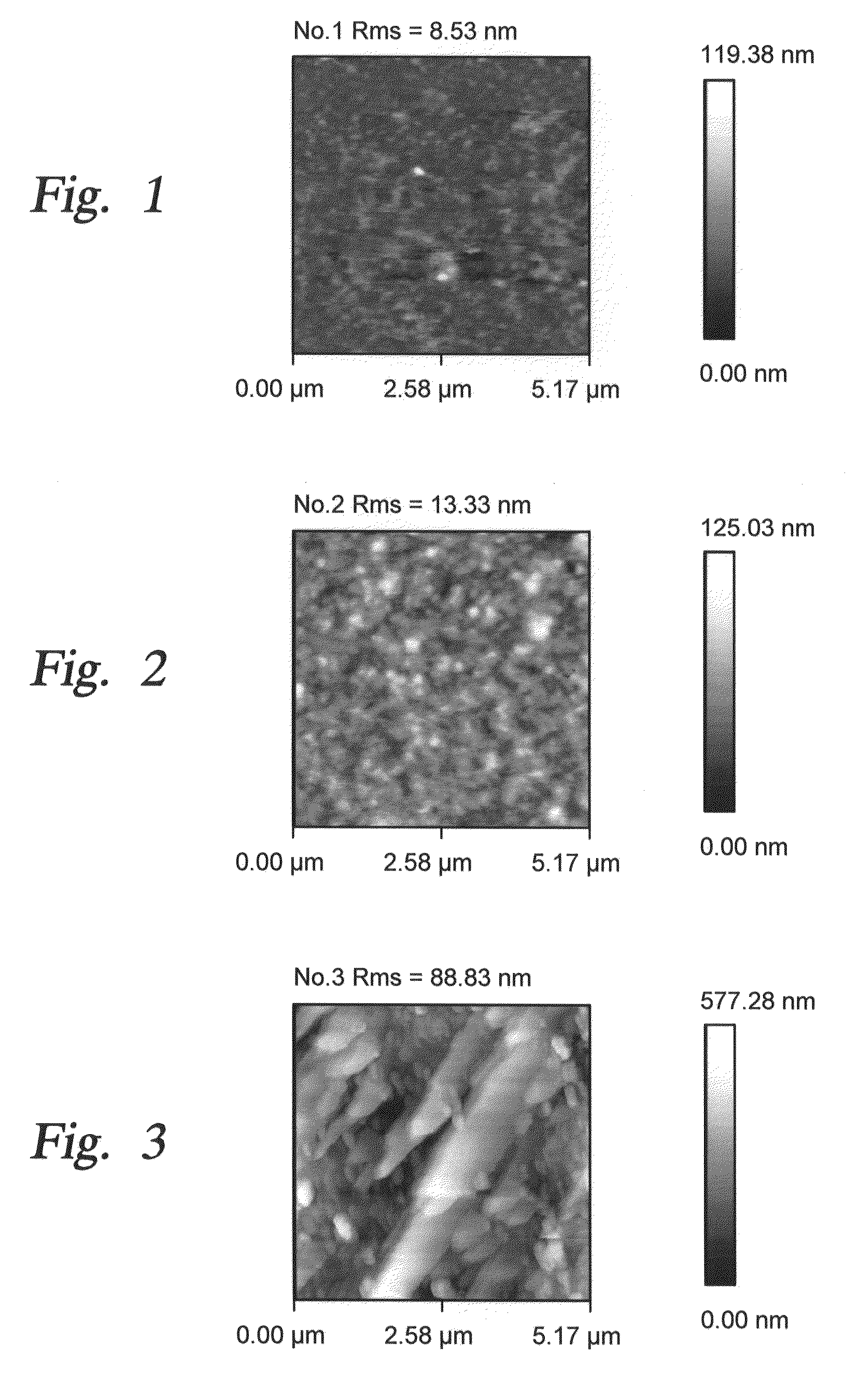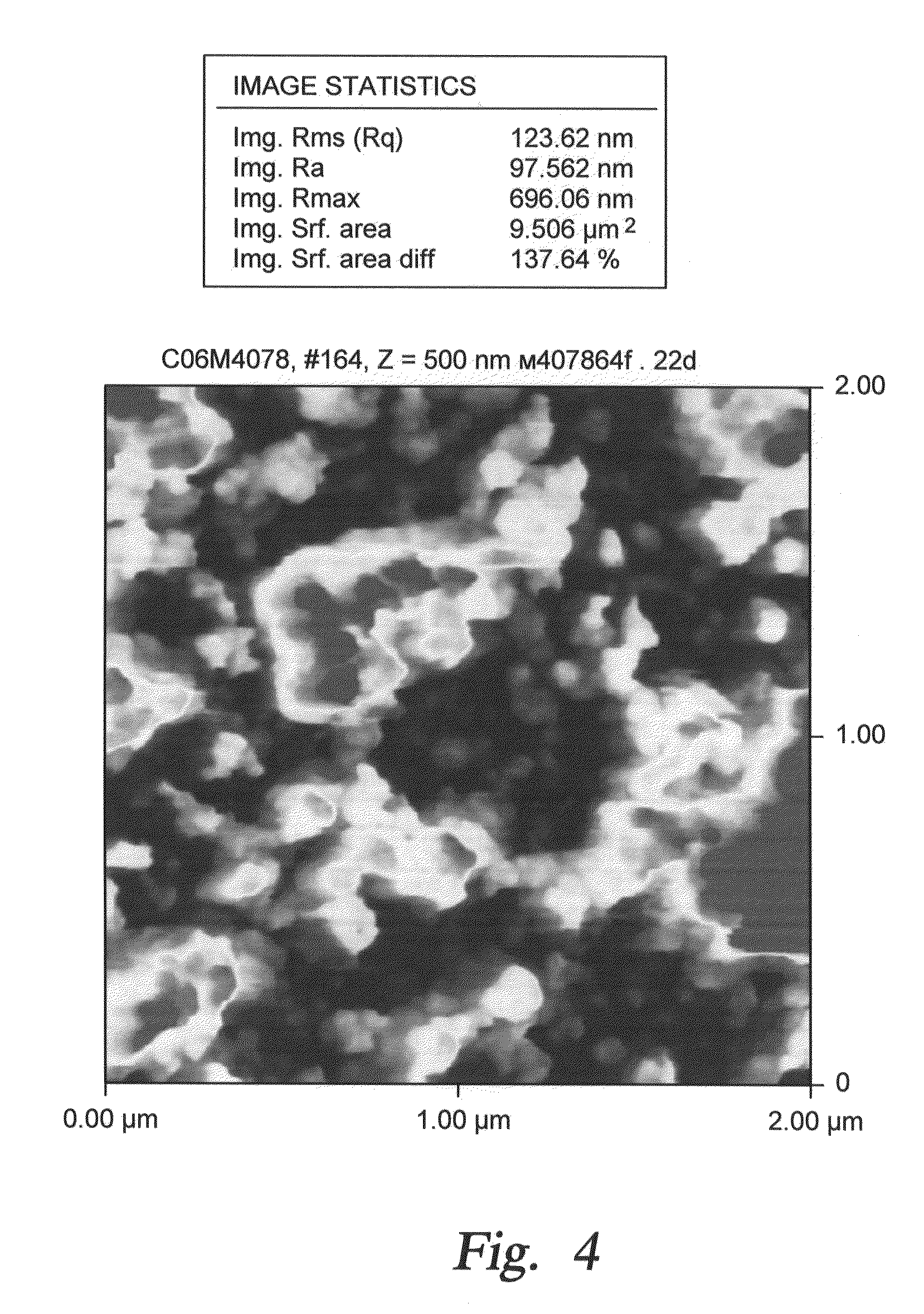Method of creating super-hydrophobic and-or super-hydrophilic surfaces on substrates, and articles created thereby
a technology of super-hydrophobic and/or super-hydrophilic surfaces, which is applied in the direction of instruments, nuclear engineering, transportation and packaging, etc., can solve the problems of many failures of electronic consumer products, limited effectiveness of coating a textured or roughened surface to produce super-hydrophobic behavior, and instantaneous wetting of the surface of such materials
- Summary
- Abstract
- Description
- Claims
- Application Information
AI Technical Summary
Benefits of technology
Problems solved by technology
Method used
Image
Examples
example one
[0051]During current experimentation, we formed rough alumina films in a single step by nucleating alumina nano-particles in a gas phase and depositing them onto a single crystal silicon substrate. In one implementation a CVD reaction of TMA (trimethylaluminum) and water vapor was used. In the past, such spontaneous gas phase reactions were considered to be problematic since they produced undesirable particles due to gas phase nucleation. In the present instance, such a gas phase reaction has been purposely used to form nano-particles. The reaction parameters are selected to control the rate of nano-particle formation and consequently the desired size of the surface roughness features. Examples of the reaction parameters and their impact on surface roughness are shown in the Table One below, where reaction precursors of TMA and Water Vapor were used to produce roughened surfaces. In one instance, a combination of TMA, Water Vapor and perfluorodecyltrichlorosilane (FDTS) reaction pre...
example two
[0062]As discussed above, a single step reaction can be used to form a super-hydrophobic film. A one-step CVD reaction may be carried out, which consists of introducing two highly reactive vapors (TMA and Water) and a fluorocarbon vapor (FDTS) into the reactor under controlled conditions to form hydrophobic nano-particles, and depositing the resulting nano-particles onto a substrate surface to form a super-hydrophobic topographic layer having a water contact angle >150 degrees. It was necessary to adjust the relative precursor partial pressures which were illustrated in Run No. 4 of Table One to obtain a topographic layer which showed lower porosity and better adhesion to the substrate. Recommended reaction precursors and process conditions are as follows: TMA, partial pressure 0.2-2 Torr; Water vapor, partial pressure 2-20 Torr; FDTS, partial pressure, 0.02-0.5 Torr; Reaction temperature, room temperature to 100° C., typically 40-70° C.; Reaction time 5-30 min. This reaction can be...
example three
[0065]A two step reaction may be used to produce a super-hydrophobic film. In this example, a two step CVD reaction was carried out, comprising:
[0066]Step 1) Introducing two highly reactive vapors (TMA and Water) into the reactor under controlled conditions (below) to form hydrophilic nano-particles and depositing the resulting nano-particles onto a substrate surface, followed by
[0067]Step 2) Functionalizing the resulting rough surface with a hydrophobic coating by vapor deposition of a SAM (FDTS, perfluorodecyltrichlorosilane, precursor was used, for example and not by way of limitation).
[0068]Preferred reaction precursors and CVD process conditions for the two step reaction: Step 1): TMA, partial pressure 2-10 Torr; Water, partial pressure 20-60 Torr; Reaction temperature, room temperature to 100° C., typically 40-70° C.; Reaction time 5-30 minutes. Step 2): FDTS, partial pressure 1-2 Torr; Water, partial pressure 5-10 Torr; Reaction temperature, room temperature to 100° C.; typic...
PUM
| Property | Measurement | Unit |
|---|---|---|
| surface roughness | aaaaa | aaaaa |
| contact angle | aaaaa | aaaaa |
| surface roughness | aaaaa | aaaaa |
Abstract
Description
Claims
Application Information
 Login to View More
Login to View More - R&D
- Intellectual Property
- Life Sciences
- Materials
- Tech Scout
- Unparalleled Data Quality
- Higher Quality Content
- 60% Fewer Hallucinations
Browse by: Latest US Patents, China's latest patents, Technical Efficacy Thesaurus, Application Domain, Technology Topic, Popular Technical Reports.
© 2025 PatSnap. All rights reserved.Legal|Privacy policy|Modern Slavery Act Transparency Statement|Sitemap|About US| Contact US: help@patsnap.com



